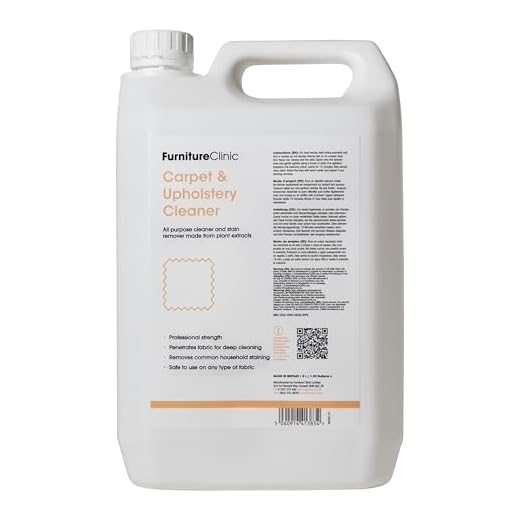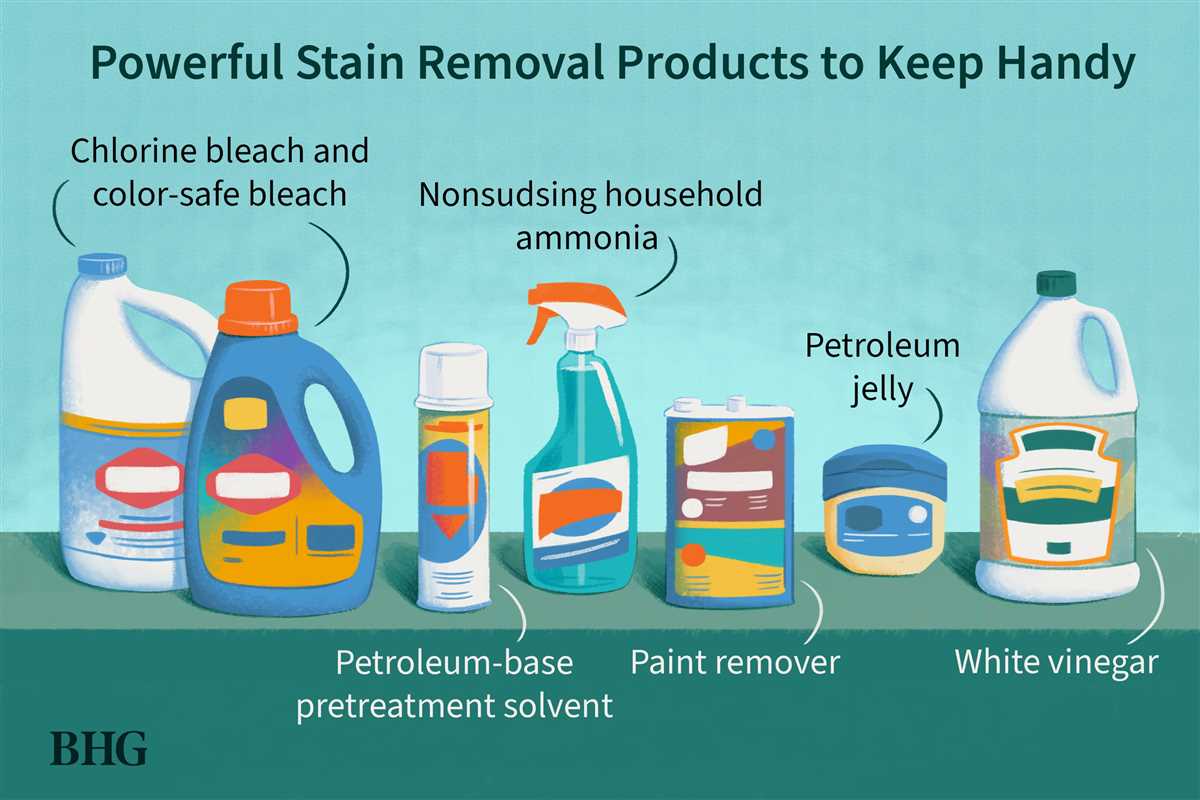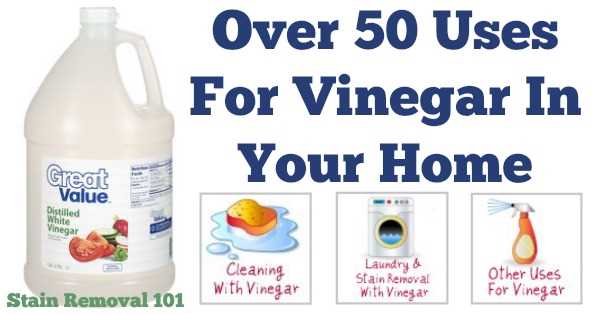




Are you tired of dealing with stubborn stains on your clothes, carpets, or furniture? Look no further than vinegar – a versatile and natural cleaning solution that can help you tackle even the toughest stains. Whether it’s a red wine spill, grease stain, or marker smudge, vinegar comes to the rescue!
Why vinegar, you may ask? Vinegar has been used for centuries as a cleaning agent due to its acidic properties. It has the ability to break down stains, kill bacteria, and remove odors effectively. Plus, it’s affordable and safe to use around children and pets.
In this ultimate guide, we will explore the various ways you can use vinegar to remove stains from different surfaces in your home.
From removing coffee stains from your favorite shirt to eliminating pet urine odours from the carpet, vinegar is your go-to solution. With this ultimate guide, you’ll have all the knowledge and techniques needed to conquer any stain that comes your way.
Why Vinegar is a Great Stain Remover
Vinegar is a versatile and natural cleaning agent that can effectively remove stains from various surfaces and fabrics. Here are some reasons why vinegar is a great stain remover:
1. Natural and Non-toxic
Vinegar is an eco-friendly and non-toxic alternative to harsh chemical cleaners. It is made from fermented ethanol, which is derived from natural sources like fruits and grains. Using vinegar to remove stains ensures a safer environment for you and your family.
2. Affordable
Vinegar is a cost-effective stain remover compared to commercial cleaners. It is readily available in most households and can be purchased in bulk at a low cost. By using vinegar, you can save money while effectively removing stains.
3. Multi-purpose Cleaner
Vinegar can be used to remove various types of stains. It is particularly effective at removing stains caused by substances like coffee, tea, wine, grease, and food. Vinegar can also be used to deodorize and sanitize surfaces.
4. Safe for Most Fabrics and Surfaces
Vinegar is safe to use on most fabrics and surfaces. However, it is always recommended to test a small inconspicuous area first to ensure that the vinegar does not cause any damage or discoloration. Vinegar is suitable for use on fabrics such as cotton, linen, and polyester, as well as surfaces like countertops, tiles, and glass.
5. Easy to Use
Using vinegar to remove stains is simple and straightforward. All you need to do is mix vinegar with water in a 1:1 ratio, apply it directly to the stain, and let it sit for a few minutes. Then, gently scrub or blot the stain until it lifts. Rinse thoroughly with water and repeat if necessary.
In conclusion, vinegar is a great stain remover due to its natural and non-toxic properties, affordability, versatility, and ease of use. By keeping a bottle of vinegar handy, you can tackle a wide range of stains effectively and without the need for harsh chemicals.
Common Stains Vinegar Can Remove
1. Coffee and Tea Stains
Vinegar is a great natural cleaner for removing coffee and tea stains. Simply mix equal parts vinegar and water and apply the solution to the stained area. Let it sit for a few minutes, then scrub gently with a cloth or sponge. Rinse with water and repeat if necessary.
2. Grease and Oil Stains
Vinegar is effective at removing grease and oil stains from various surfaces. Combine vinegar with baking soda to form a paste, then apply it to the stained area. Leave it for a few minutes, then scrub with a brush or sponge. Rinse with water and repeat the process if needed.
3. Wine and Fruit Juice Stains
When it comes to wine and fruit juice stains, vinegar can be a lifesaver. Blot the stained area with a cloth or sponge to remove any excess liquid. Then, mix one part vinegar with two parts water and apply the solution to the stain. Allow it to sit for a few minutes, then rinse with water and repeat if necessary.
4. Ink Stains
If you have an ink stain on your clothes or other fabrics, vinegar can help remove it. Dab the stain with a cloth soaked in vinegar and let it sit for a few minutes. Rinse the area with water and repeat if needed.
5. Grass Stains
Vinegar can also be used to remove grass stains from clothing. Apply undiluted vinegar directly to the stain and let it sit for about 10 minutes. Then, wash the item as usual and the grass stain should be gone.
6. Mildew and Mold Stains
Vinegar is an effective solution for removing mildew and mold stains. Mix equal parts vinegar and water, then apply the solution to the affected area. Let it sit for a few minutes, then scrub with a brush or sponge. Rinse with water and repeat if necessary.
7. Hard Water Stains
Vinegar can help remove hard water stains from surfaces such as glass, tiles, and faucets. Apply undiluted vinegar to the stain and allow it to sit for a few minutes. Scrub the area with a cloth or sponge, then rinse with water.
8. Sweat Stains
To remove sweat stains from clothing, mix equal parts vinegar and water. Apply the solution to the stained area and let it sit for about 30 minutes. Wash the item as usual and the sweat stains should be gone.
9. Pet Stains and Odors
If you have pet stains and odors on your carpets or upholstery, vinegar can be a natural solution. Blot the stained area with a cloth or paper towel to remove any excess liquid. Mix one part vinegar with two parts water, then apply the solution to the stain. Let it sit for a few minutes, then blot with a clean cloth. Repeat if necessary to remove the stain and odor.
10. Bathroom Stains
Vinegar is an excellent cleaner for removing stains in the bathroom. For toilet bowl stains, pour undiluted vinegar into the bowl and let it sit for a few hours or overnight. Scrub with a toilet brush and flush. For stains on shower tiles or grout, mix equal parts vinegar and water, then scrub the stained area with a brush or sponge. Rinse with water and repeat if needed.
Step-by-Step Guide to Removing Stains with Vinegar
1. Gather Your Materials

Before you begin removing stains with vinegar, make sure you have all the necessary materials:
- Vinegar (white distilled vinegar or apple cider vinegar)
- Clean white cloth or sponge
- Baking soda (optional)
- Water
2. Identify the Type of Stain
It’s important to identify the type of stain you’re dealing with before you begin the vinegar stain removal process. Different stains may require different approaches. Common types of stains include:
- Food stains
- Grease or oil stains
- Ink stains
- Wine or juice stains
- Mildew stains
3. Pre-treat the Stain
Before applying vinegar to the stain, try pre-treating it with water and a gentle detergent. Gently blot the stain with a clean cloth or sponge soaked in soapy water. This step can help to loosen and lift the stain.
4. Apply Vinegar
Once the stain has been pre-treated, it’s time to apply vinegar. Pour a small amount of vinegar directly onto the stain. You can use a clean cloth or sponge to gently dab the vinegar onto the stain, making sure to cover the entire stained area.
5. Blot and Rinse

After applying vinegar, use a clean cloth or sponge to blot the stain. Apply gentle pressure to soak up the vinegar and lift the stain from the fabric or surface. Rinse the area thoroughly with water to remove any remaining vinegar residue.
6. Repeat if necessary
If the stain is stubborn and does not come out completely, repeat the vinegar application and blotting process. You may need to repeat this step several times for particularly stubborn stains.
7. Launder or Clean as Usual
Once the stain has been removed, launder the fabric or clean the surface as you normally would. Follow the care instructions on the fabric label or use the appropriate cleaning method for the surface.
8. Consider Baking Soda (Optional)
If the stain persists after using vinegar, you can try using baking soda as an additional stain remover. Sprinkle baking soda onto the stain, let it sit for a few minutes, and then blot it with a clean cloth or sponge soaked in vinegar. The combination of baking soda and vinegar can help to further break down and lift stubborn stains.
9. Prevention Tips
To minimize the risk of future stains, consider these prevention tips:
- Act quickly when a stain occurs
- Blot the stain instead of rubbing it
- Test any new stain removal method on a small, inconspicuous area first
- Follow the care instructions for your fabrics and surfaces
10. Conclusion

Vinegar is a versatile and effective stain remover that can help tackle a wide range of stains. By following these step-by-step instructions, you can learn how to remove stains with vinegar and keep your fabrics and surfaces clean and stain-free.
Tips and Tricks for Effective Stain Removal
Removing stains can be a challenging task, but with the right tips and tricks, you can make the process much easier and more effective. Whether you are dealing with common stains like red wine or grease, or stubborn stains like ink or blood, these tips will help you achieve excellent stain removal results.
1. Act quickly
When a stain occurs, it’s crucial to act quickly. The longer you wait, the harder it will be to remove the stain. Blot the stain gently with a clean cloth or paper towel to absorb as much of the liquid or substance as possible.
2. Test on inconspicuous area
Before applying any stain removal method or product, it’s essential to test it on an inconspicuous area of the fabric to ensure it doesn’t cause any damage or discoloration. Once you are sure it’s safe to proceed, apply the stain removal solution to the stained area.
3. Vinegar solution
Vinegar is an excellent natural stain remover. To remove common stains like coffee, tea, or fruit juice, mix equal parts of white vinegar and water. Apply the solution to the stain and let it sit for a few minutes before blotting it with a clean cloth. Repeat if necessary.
4. Baking soda paste
Baking soda is another versatile ingredient for stain removal. To remove stains like grease or oil, make a paste by mixing baking soda with water. Apply the paste to the stain, gently scrub it with a soft brush, and let it sit for a few minutes. Rinse thoroughly with water and repeat if needed.
5. Salt
Salt is great for absorbing fresh stains, especially on fabrics or carpets. Sprinkle salt over the stain and let it sit for a few minutes. The salt will draw out the moisture and stain. Once the salt has absorbed the stain, vacuum or brush it away.
6. Hydrogen peroxide
Hydrogen peroxide is effective for removing stubborn stains like blood or ink. Apply a small amount of hydrogen peroxide directly to the stain and let it foam. Gently blot the stain with a clean cloth, repeating the process until the stain fades.
7. Professional stain removers
If all else fails, consider using a professional stain remover. There are various stain removers available on the market that are specifically formulated to tackle specific types of stains. Follow the instructions on the product carefully for best results.
8. Avoid heat
When working with stains, it’s essential to avoid applying heat to the stained area. Heat can set the stain, making it even more difficult or impossible to remove. Always use cold water when rinsing or treating stains and avoid using hot water or a hot dryer.
9. Patience is key
Removing stains can be a time-consuming process, especially for tough or set-in stains. It may require multiple attempts and treatments before achieving the desired results. Be patient, and don’t give up too soon. With persistence, most stains can be successfully removed.
- Act quickly
- Test on inconspicuous area
- Vinegar solution
- Baking soda paste
- Salt
- Hydrogen peroxide
- Professional stain removers
- Avoid heat
- Patience is key
By following these tips and tricks, you can effectively remove stains and keep your fabrics looking clean and fresh. Remember to always read and follow the care instructions for your specific fabric to avoid any damage or color fading. With a little effort and the right techniques, you can tackle even the toughest stains with ease.
Precautions When Using Vinegar as a Stain Remover
1. Spot Test
Before using vinegar as a stain remover, it’s important to spot test it on an inconspicuous area of the fabric or surface. This is to ensure that vinegar does not cause any adverse reactions such as discoloration or damage. Apply a small amount of vinegar on a hidden area and wait for a few minutes to see if there are any negative effects.
2. Dilute Vinegar
Vinegar is an acidic substance, so it’s recommended to dilute it with water before using it as a stain remover. This helps to lessen the acidity and minimize the potential of causing damage to the fabric or surface. A general ratio to follow is one part vinegar to three parts water.
3. Avoid Using on Delicate Fabrics
Vinegar can be harsh on delicate fabrics such as silk or lace. It’s best to avoid using vinegar as a stain remover on these types of fabrics, as it may cause discoloration or damage. Instead, consider seeking professional cleaning services for delicate fabrics.
4. Test for Colorfastness
Some fabrics may be prone to running or bleeding when exposed to moisture, including vinegar. It’s important to test for colorfastness before applying vinegar to the stain. Moisten a cotton swab with vinegar and dab it on a hidden area of the fabric. If there is any color transfer, it’s best to avoid using vinegar as a stain remover on that particular fabric.
5. Avoid Using on Stone or Marble Surfaces
Vinegar is acidic and can etch or damage stone or marble surfaces. It’s advisable to avoid using vinegar as a stain remover on these types of surfaces. Instead, use a mild, pH-neutral cleaner specifically designed for stone or marble.
6. Ventilation
When using vinegar as a stain remover, ensure that the area is well-ventilated. Vinegar has a strong smell that can be unpleasant, so opening windows or using fans can help dissipate the odor. Additionally, good ventilation can prevent the build-up of fumes that may be harmful if inhaled.
7. Store Properly
When not in use, vinegar should be stored properly to maintain its effectiveness. It’s best to keep vinegar in a cool, dark place away from direct sunlight or heat sources. This will help preserve its potency and prevent any changes in its chemical properties.
8. Rinse Thoroughly
After using vinegar as a stain remover, it’s important to rinse the area thoroughly with water. This helps to remove any residual vinegar, which can potentially cause damage over time. After rinsing, make sure to dry the fabric or surface properly to prevent any moisture-related issues.
9. Consult Professionals
If you are unsure about using vinegar as a stain remover or if you encounter stubborn stains, it’s always best to consult professionals. They have the expertise and knowledge to handle different types of stains and fabrics, ensuring the best results without any risks of damage.
| Precaution | Description |
| Spot Test | Test vinegar on an inconspicuous area first. |
| Dilute Vinegar | Mix vinegar with water. |
| Avoid Delicate Fabrics | Do not use vinegar on delicate fabrics. |
| Test for Colorfastness | Check if the fabric runs or bleeds when exposed to vinegar. |
| Avoid Stone and Marble Surfaces | Vinegar can damage stone and marble. |
| Ventilation | Ensure good airflow when using vinegar. |
| Store Properly | Keep vinegar in a cool, dark place. |
| Rinse Thoroughly | Remove all traces of vinegar after use. |
| Consult Professionals | Seek professional advice when in doubt. |
FAQ
Can vinegar remove stains from clothing?
Yes, vinegar is an effective stain remover for clothing. It can help remove stains such as coffee, wine, grease, and sweat stains.
How do I use vinegar to remove stains?
To use vinegar as a stain remover, you can mix equal parts vinegar and water and apply the solution to the stained area. Gently blot the stain with a clean cloth or sponge until it lifts. Rinse the area with water to remove any leftover vinegar.
What types of stains can vinegar remove?
Vinegar can remove a variety of stains including food stains, ink stains, sweat stains, and even some carpet stains. It is a versatile and natural stain remover.
Is vinegar safe to use on delicate fabrics?
Vinegar is generally safe to use on delicate fabrics, but it is always recommended to test a small, hidden area first to ensure there are no adverse effects. Additionally, it is best to dilute the vinegar with water when using it on delicate fabrics to prevent any potential damage.













